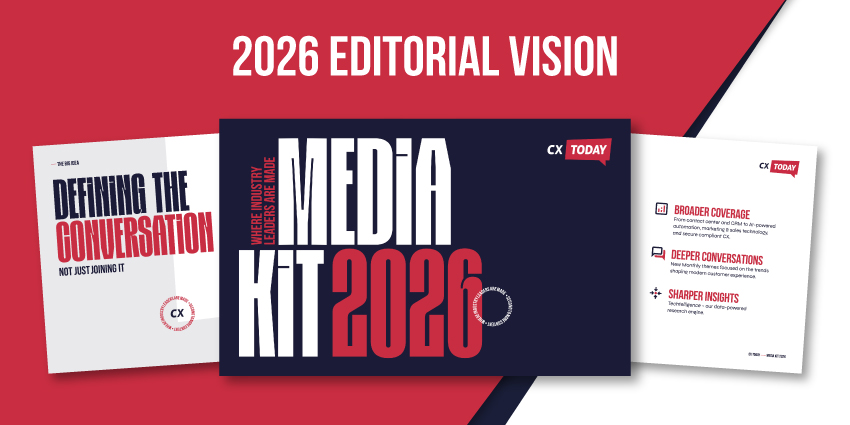Many operations leaders consider customer satisfaction (CSAT) the undisputed king of contact centre metrics. However, no metric is an island. Trends in other metrics will impact CSAT. Highlighting these offers insights into how to increase customer happiness.
Of course, many more than five contact centre metrics impact customer satisfaction. Examples include abandon rates, forecast accuracy, and agent proficiency. However, five of the most pertinent metrics that influence CSAT include:
1. Customer Effort
A highly regarded Harvard Business Review article, entitled: “Stop Trying to Delight Your Customers“, first underlined the significance of customer effort on CSAT and loyalty.
It reads: “When it comes to service, companies create loyal customers primarily by helping them solve their problems quickly and easily.”
The report also suggests conventional wisdom that customers are more loyal to companies that go above and beyond is dubious. Its research instead indicates companies that “exceed customer expectations” create customers only marginally more loyal.
2. First Contact Resolution
According to research firm Frost & Sullivan, First Contact Resolution (FCR) “has an effect on almost every other meaningful statistic and measurement in the call center.” As such, it states that FCR is the “home run” of all operational metrics.
So, while many will view the metric as an efficiency saver, as it allows contact centres to monitor and reduce repeat calls, it also has a significant impact on CX.
How? In a similar manner to customer effort. By managing and eliminating the need to call back, customers do not have to expend extra energy to resolve their problems.
3. Service Level
The longer customers wait to talk with contact centre agents, the more their frustration grows. Contact centres understand this, yet costs and recruitment issues prevent them from staffing to a level where an agent answers every contact within moments.
Service level helps contact centres find the balance between customer-pleasing wait times and cost efficiencies. Therefore, monitoring this metric and keeping wait time steady is crucial to maintain CSAT rates.
A study within Scientific Research Publishing confirms this, stating that service level has a “significant” role within CSAT. It also suggests that contact centres should: “Empower agents to give an informative satisfactory answer and top of the line service.” Doing so may reduce the need for repeat calls that clog up call queues.
4. Quality Scores
Contact centres often conduct customer satisfaction research to determine agent behaviours that improve CX. Analysts then build these into quality scorecards.
As a result, when contact centres engage in quality monitoring, they measure the call from customers’ perspectives. By doing so, operations can track trends in agent behaviours that directly influence CSAT.
5. Employee Engagement
Happy employees = happy customers. The saying is perhaps a little cliché, yet the evidence backs it up.
2017 Aberdeen Group research reports that companies with formal employee engagement plans have accomplished 39% annual growth revenue improvements from new customers.
Many business leaders also share its sentiment, with Richard Branson a high-profile example. As he infamously once said: “Clients do not come first. Employees come first. If you take care of employees, they will take care of the clients.”
Building a Strategy for These Metrics
Bolstering CSAT requires an understanding of the factors that influence it. Therefore, many dashboards include the metrics above – and others – to showcase how contact centre performance affects critical customer outcomes.
Yet, it is not enough to only consider the customer. Every report should also centre around agents and the wider business.
By considering each of these “stakeholders”, companies can create one clear view of contact centre performance. However, creating a reporting process that enables this has proven tricky for many operations.
Streamline Contact Centre Reporting
Consider the current state of contact centre reporting. Analysis without action is far too common. Why? Because contact centres often become lost in numbers and struggle to pinpoint the best steps forwards.
The phenomenon brings to mind the saying: “Weighing the pig doesn’t make it fatter.” Operations managers spend so much time scouring data sets and uncovering metric scores that there is often little left to address them with prudent, bespoke strategies. These strategies add weight to the pig.
Making this point, Alberta Bosco, Product Marketing Manager at Puzzel, says:
Contact centres create and handle a vast amount of data. However, the average operation uses multiple systems. Managers in charge of reporting must then spend lots of time collecting, cleaning, and converting data into a readable resource that provides an accurate view of performance.
“The result is that they have limited time to engage in data analysis, their actions are never real-time, and the entire decision-making process is slow.”
A real-time dashboard helps speed it up. Connected to various data streams, it enables contact centre managers to assess and visualise data in one central location.
Customise Real-Time Call Centre Reports
A real-time dashboard – such as the Puzzel offering – enables contact centres to connect different data streams, highlighting insights across various agents, teams, and queues.
It also provides layout management tools, a widget editor, and a dashboard management interface to customise the solution further, creating a clear view of the customer service experience.
Going into more detail, Bosco adds: “Thanks to drag-and-drop functionality, managers can customise dashboards to monitor and visualise specific metrics in real-time.”
As such, contact centres can build on standard reports as they go, pinpointing critical metrics to meet business needs. Managers may then – at a glance – attain a rounded view of how the contact centre is performing.
Creating benchmarks, building graphics, and attributing costs to trends within the solution also helps to deliver enhanced real-time insights. These highlight significant opportunities to improve CSAT and wider contact centre performance.
Eager to create a real-time dashboard and streamline contact centre reporting? Reach out to Puzzel’s team of experts.







